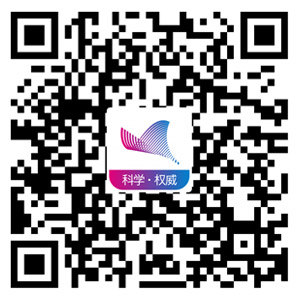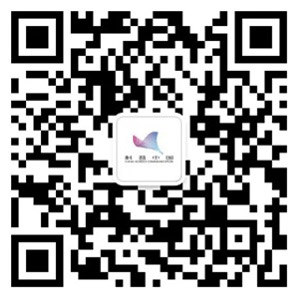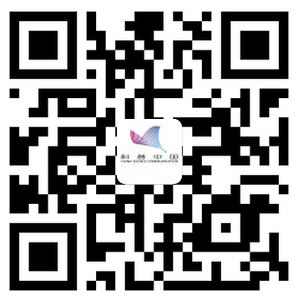圣诞节前夜,“海豹” 号来到美国的南安普敦港。

“海豹” 号船员来自世界各地,是艘混搭的远洋货轮。
中国水手童欣第一次在国外过圣诞节。
大厨凯恩早就准备了圣诞节的美食。餐桌上摆满了烤火鸡、生拌三文鱼、红肠、树根蛋糕、姜饼条、三色塔沙拉等美食。
最后,大厨凯恩端上一道名叫“怪物”的甜点,食材是一堆土豆:“哥伦布土豆是欧洲人的救命恩人”大厨神秘的说。
童欣边吃边思索:“怪物”与“救命恩人”驴唇不对马嘴,还跟哥伦布连在一起,这里面一定有文章!
童欣知道船长霍姆斯来自哥伦布的家乡:意大利的热那亚,是位忠实的哥伦布迷。
还在航海学校读书的时候,哥伦布发现美洲大陆的英雄壮举令他赞叹不已。知道意大利的热那亚是航海家的摇篮,出了众多知名航海家。
哥伦布出身在热那亚一个守门人的家庭。一次偶然的的机会,哥伦布来到叔叔看守的“灯笼塔”玩耍。
“灯笼塔”是意大利热那亚的标志,也是世界上最古老的灯塔之一。在塔顶望看海面进进出出的航船,哥伦布再也控制不住自己;高声叫到:“我要做一名海员。驰骋在大海上的“海神”啊,我什么时候才能登上你的甲板!”。
终于,在哥伦布十岁的时候,登上了他向往已久的“海神”。经过四年多的海上磨练。十四岁正式成为一名地地道道的海员,也是至今世界上最年轻的海员。
但是,“怪物”甜点与哥伦布有什么关系,为什么叫“哥伦布土豆?,还是欧洲人的救命恩人”
晚餐后,童欣去找大厨凯思。醉眼腥松的大厨只冒了一句:“这道甜点是船长亲自点的。”
忙着装卸货、加油、保养后,直到“海豹号”驶离港口,童欣才敲开了船长的房门。
船长霍姆斯十分喜欢好学多问的童欣。讲起了“哥伦布土豆”的故事。
十五世纪末期。哥伦布率领一支庞大的船队,经历了千辛万苦,终于登上了美洲大陆,以为来到了传说中遍地黄金,盛产香料的富庶的东方。但是,这里既设有黄金也没有香料。船员却发现在贫瘠的土地上,长看一种看上去稀奇古怪的食材——土豆。
哥伦布在航海的日记里,记下了这种闻所未闻的“怪物”,把一堆球根栽种后,它会长出生杈的茎,开出紫色的花。这些植物的根在地下,连着一群鸡蛋大小的东西。把鸡蛋大小的东西煮熟后,色味俱佳,是船员的佳肴……。
哥伦布将这种“怪物”带回了欧洲。
有信仰的欧洲人见到土豆犯了难;《圣经》里没有关于土豆这种“怪物”的记载。当时有人说它是一种靠不住的作物,认为它的根子、块茎形状怪异,藏着“凶神恶煞”,吃了它,人们会得病。在欧洲长期被人们拒绝食用。
但是,土豆适应性很强。在任何土地里都能茁壮生长,而且只需4个月的时间就能成熟。在欧洲小麦歉收的年份,土豆的收成却十分好,直到饥荒和战争在欧洲蔓延。“怪物”土豆的命运才有了转机。
一位来自法国名叫安东尼·帕门提尔的人,原是军队中的药剂师。在战争中被普鲁士俘虏。在这之前,周围饥荒,很多普鲁士人开始食用土豆。在牢里,土豆成了安东尼·帕门提尔唯一的食物。
恰巧,法国遭遇的灾荒,粮食连连歉收。回到法国的帕门提尔在法国国王路易十六的生日宴会上,献上了紫色的土豆花,并说服了国王和王后接受了“怪物”,王后还把紫色的土豆花戴在发髻上做装饰。
“怪物”被堂而皇之地摆在了宫廷的筵席上。不久,国王和王后又赐给了帕门提尔一块土地,专门种植“怪物”土豆。
“怪物”土豆使饥荒和战争年代的欧洲找到了救命的食材。
从此,“怪物”找到了大显身手的机会。欧洲各国先后广泛种植这种高产的粮食,并逐渐传到了东方。“每到圣诞节”之夜,欧洲人总忘不了做上一道“怪物”甜点——土豆,船长霍姆斯说:“这是对土豆的感激,也是对哥伦布发现美洲大陆的纪念。”
船长霍姆斯说着拿出一张珍藏已久的照片;这是在哥伦布家乡纪念馆拍的照片;一帧高悬的镜框里,并排着四枚徽章,第一枚和第二枚是卡斯利亚和莱昂王室的徽章——城堡和狮子。第三枚是海浪拍击的金色岛屿。第四枚是五个铁锚加上金色原野。
船长最后自豪地说:“这是哥伦布生前得到的最高奖赏,至今悬挂在热那亚“哥伦布纪念馆里。”“哥伦布土豆”是海员的光荣,它记载着人类航海的光辉历史!
The MV Seal arrived at Southampton Harbor in the United States on Christmas Eve.
The MV Seal is a motor ship that transports cargo all around the world. Its crew features
members from many different countries and of all ages and experiences. One of its crew
members, a young Chinese shiphand named Tong, was about to celebrate his first Christmas
onboard, so his crewmates wanted this Christmas to be extra special.
The MV Seal’s chief cook, Ken, had begun to prepare a large Christmas feast for the
excited seafarers hours in advance. Roast turkey, salmon, sausages, gingerbread, salads, and
cake stood tall on the table in the MV Seal’s grand terrace, awaiting the call for dinnertime.
As the crew gathered on the grand terrace and got ready to commence their meal, Ken
took out one last dish from the kitchen. It was a dessert named Sputnik that’s mainly made
with potatoes, and according to Ken, they were part of the Columbian Exchange and changed
the world.
Tong sunk his fork into the Sputnik and took a large bite. It tasted sweet and unlike any
other potatoes he’d ever tried before, but he had no idea how a simple starchy vegetable
could change the course of history. Ken also said that Sputnik was somehow related to
Christopher Columbus, who Tong thought he knew a lot about. When he was a student at a
Nautical Academy, he was impressed by Columbus’s feat of accidentally discovering
America and read many resources about his career and early life.
Tong knew that since Genoa was a prosperous seaside town, many of its residents once
had dreams of becoming a seafarer. Christopher Columbus was no exception. Though he was
born to merchant parents, Columbus’s uncle was a professional lighthouse keeper who
regularly allowed him to explore and play around the enigmatic Lighthouse of Genoa.
The Lighthouse of Genoa was and still is today an important landmark that guided the
many ships and cruises that frequented the waters off the coast of Italy. Standing at the top of
the Lighthouse and looking over the ocean and crafts in the horizon, a young Christopher
Columbus thought to himself, “One day, I will become a great sailor. When, oh when will I
be able to set out to sea?”
As a result of his determination, Columbus started training for a life of nautical
adventures when he was only ten years old. After four years of harsh trials and rigorous
studying of the ocean’s every mood and action, Columbus got his first position as a shiphand
at fourteen years old and set sail for nearby European countries like England and Ireland.
However none of the scholarly articles that Tong read had any mention of the “Sputnik
potatoes”, nor did they explain what exactly was the Columbian Exchange.
After dinner, Tong approached Chef Ken once again to ask about Columbus and
Sputnik. Ken, who was high-spirited and drunk from all the Christmas wine, told Tong, “I
only know that the Captain personally requested this dessert himself.”
In order to finish up his tasks of loading and unloading cargo, refueling the vessel’s tank,
and basic ship maintenance, Tong was only able to approach the Captain long after the MV
Seal left Southampton Harbor.
Cautiously, Tong knocked on the Captain’s door and awaited an answer.
The captain of the MV Seal, Captain Jovani, was a seasoned sailor who also grew up in
Columbus’s hometown of Genoa, Italy, and knew many secrets about the notable navigator.
Captain Jovani listened to Tong’s curious inquiry about Columbus, and commended him
for being eager to learn. Jovani asked Tong to sit down in front of his desk, and began telling
the tale of the Columbian Exchange.
At the tail of the 15th century, Columbus led a large fleet of ships through extreme
adversities and finally reached the North American continent. At the time, Columbus
believed he had set foot on the Indies, which is the modern country of Indonesia. But instead
of finding rich spices and tropical commodities, Columbus and his crew could only retrieve
the strange-looking, circular plant-like produce that we now call potatoes.
In Columbus’s journal, he detailed his observations on this unheard vegetable, Sputnik.
After planting a roll of the bulbous plant into the ground, its stems eventually sprouted above
the soil and blossomed with purple flowers. When the egg-like plants were cultivated to their
final form, they could be cooked in a variety of ways: roasted over a bonfire, boiled in hot
water, or raw with other vegetables and fruits.
Columbus brought the Sputnik with him back to Europe on a voyage that came to be
known as the Columbian Exchange.
To his disappointment, many European natives were not fond of this strange item. There
was no record of such a food in the Bible, and its strange shape and taste compelled people to
think that it was an unreliable crop. Besides, the name “Sputnik” sounded unfamiliar and
alien, and many assumed that they would go ill if they ever ate this peculiar produce.
Nevertheless, potatoes were resilient and adaptable. It could grow on any land and in
any type of dirt, and only needed a short period of four months to become fully ripe. During
Europe’s years of devastating famine, when wheat crops failed to satisfy the needs of citizens,
Sputnik stepped up as an abundant resource. Especially when war and food shortages
escalated across Europe, Sputnik had its time to shine, thanks to a Frenchman named
Antoine-Augustin Parmentier.
Parmentier served as a military pharmacist for the French army in the Seven Weeks War,
and served in a Prussian prison for a long time following his capture. Prussia had just
suffered from a great famine right before the war, and the only widespread food was Sputnik.
Under Prussian incarceration, Sputnik was the only food Parmentier could eat.
By chance, as Parmentier was released and returned home, the people of France were
also suffering from a severe food deprivation. At a royal banquet, Parmentier presented a
bouquet of purple flowers to King Louis XVI and convinced the regency to accept his gift of
Sputnik to the monarchy. Marie Antoinette, the wife of King Louis XVI, fell infatuated with
the delicate purple flowers and even embellished them in her hair accessories.
The Sputnik was put on display inside the French imperial court. Soon later, the King
and Queen assigned a piece of land to Parmentier and tasked him with cultivating the
delicious vegetable during the French famine.
The Sputnik helped multiple countries tackle the hardships of war and food scarcities,
and charmed countless people with its distinctive taste.
Aside from being a valuable crop in times of famine, the Sputnik has had many
opportunities to show its strengths. Because of the various ways it can be cooked, the Sputnik
became a staple in both daily home cooked meals and upscale events or celebrations. Every
Christmas, many sailors cooked a special dessert with potatoes and called it Sputnik, in order
to honor the achievements of the potato and to show appreciation for those who recognized
its functionality.
Captain Jovani pulled out an old photograph from his drawer and showed it to Tong. It
was taken in Jovani’s hometown of Genoa, at the Christopher Columbus memorial. The
wooden frame around the photo had four medals fixed in its corners. The first and second
were the emblems of the Royal Houses of Castile and Léon, the third was a shining badge of
a golden island with waves hitting its shores, and the last featured five anchors and a golden
potato field at its center.
Jovani declared proudly, “These are the most important awards that Christopher
Columbus had ever received, and they are still displayed at the Columbus Memorial in
Genoa. The Sputnik is an eminent glory for all seafarers, and it demonstrates just how
monumental nautical travel and exchanges can be!”




 扫码下载APP
扫码下载APP

 科普中国APP
科普中国APP
 科普中国
科普中国
 科普中国
科普中国